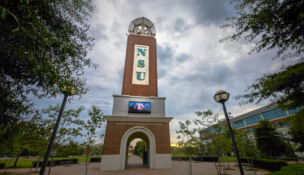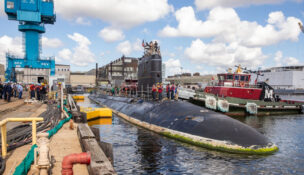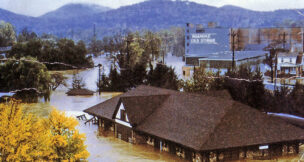Little fish, big pond
Fourth-graders get foothold in maritime industry
Little fish, big pond
Fourth-graders get foothold in maritime industry
Sometimes all it takes is seeing a child watch a crab crawl across a water table for the first time, Nate Sandel has learned.
The director of education and community engagement at Nauticus, Norfolk’s science and maritime museum, Sandel saw the look of awe in a fourth-grade boy’s face as he watched crabs walk right in front of him, close enough to touch.
“It’s what gets me out of bed in the morning — seeing these kids have these experiences,” Sandel says. “Hampton is on the water, but this was the first time this kid’s seen a crab alive. He’s able to touch it, and see how it moves. Just seeing the wonder [in his eyes], it was so worth all the work.”
In January, Nauticus started its STEM to Stern Careers program, which invites fourth-graders from economically disadvantaged Title I schools in Norfolk and Hampton to the museum and science center, where they learn about maritime careers — everything from marine biology research to how lighthouse lenses work.
More than 1,500 local students will take part in the program, which includes both in-classroom sessions at students’ respective schools as well as visits to Nauticus, which hosts field trip groups from local schools all year. STEM to Stern is made available through $50,000 in grants from COVA STEM Hub and Howmet Aerospace Foundation.
“My passion is really to expose the maritime industry to historically underserved students — students who don’t typically get opportunities to explore and do things after school and outside of school,” says Sandel, who joined Nauticus in 2022 after developing the CRMM Miniboat Program, in which middle-schoolers in the U.S. and Japan designed, built and launched seaworthy boats in the Pacific Ocean.
At Nauticus, which is in the midst of a $21.5 million redesign project expected to be complete in October, STEM to Stern students can see a battleship, a schooner and an active cruise ship terminal — a setting that’s new and exciting for many students. The renovation is geared toward teaching visitors young and old about maritime careers.
In STEM to Stern, students are still working on lessons they need for Virginia’s Standards of Learning (SOL) tests, an important factor for schools.
“They were intentional on connecting the SOLs with the experiment and have it align,” says Jacqueline Ludy, a specialist at Norfolk-based Southside STEM Academy at Campostella, one of the first participating schools. “We try to make sure that everything that we do is centered around the SOL and gives them hands-on experiences, because this is a very rigorous test.”
Students also experience what it’s actually like to work on a ship at sea, and the program concludes with Nauticus representatives visiting classrooms to answer questions about maritime jobs.
“Hopefully at the end, if they don’t want a job in the maritime industry, we really want them to have respect for the people in this community because that’s our community,” Sandel says.
STEM to Stern arrives at a time in students’ lives when they can start thinking about their future careers. Many middle and high schools in the Hampton Roads region also offer specialized classes, including maritime courses, which can help students get a foothold in their desired professional field.
“No matter if you have a GED or you want to get a Ph.D., there is a job in the maritime industry for you,” Sandel says. “And what’s amazing about those jobs is every single one of them pays more than their teachers make. Our real goal is for our local youth to see people who look like them in these high-paying jobs.”
n
















